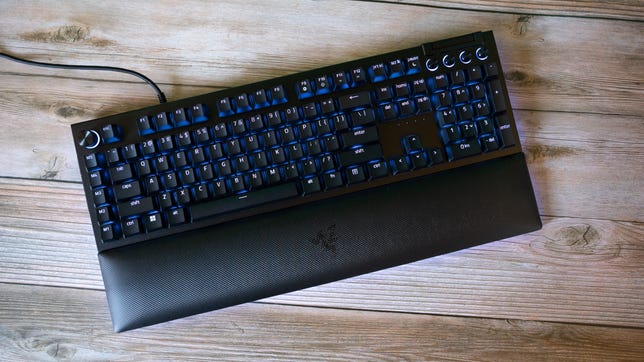Razer’s customizing-comes-first mechanical gaming keyboard line, BlackWidow, hits its fourth generation with the BlackWidow V4 Pro, a $230 ( 230, AU$400) full-size model with some notable improvements over its predecessor. These improvements include expanded lighting, more programmable controls, USB passthrough and an improved wrist rest design. These are all notable updates; but while I welcome all the changes in spirit, I’m not thrilled with the execution in a few cases.
Nothing has changed in its fundamental keyboard aspects, with the exception of a boost of the maximum polling rate to 8,000Hz, something I’m not sure you really need here. The switches and keycaps remain the same: You have a choice of the latest generation of Razer’s tactile Green or linear Yellow switches and Razer’s durable DoubleShot ABS keycaps.
Like
- Good, durable switches
- Expanded lighting zones
- More programmable controls
- Vastly improved magnetically attachable wrist rest
- Added USB passthrough
Don’t Like
- Buttons on left side are really easy to hit accidentally
- Multicontroller roller is too low relative to the height of the keys
There are a lot more lighting zones thanks to the addition of underglow strips on the left and right, plus a front strip on the wrist rest, five new backlit macro keys down the left side and a new programmable control dial in the upper left corner.
Razer says it’s added lenses to the individual backlight LEDs, which does seem to improve the focus in particular directions. I also think it’s made a difference in the number of perceptible brightness levels — if you need that level of granularity. I wish you could take advantage of that by controlling the brightness levels for individual or groups of keys the way you can control colors: That way the keys you need most frequently could be brighter as well as a different color, but not completely dark.
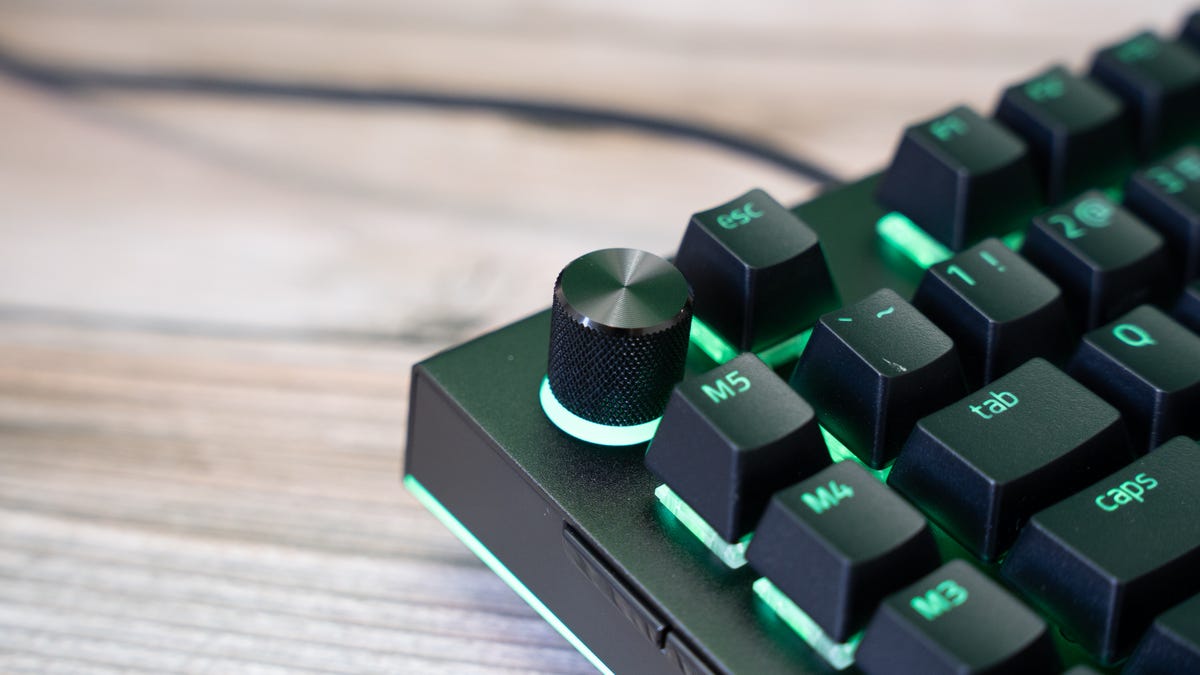

The new control dial lets you map operations to it, which can be profile-dependent. The mappings default to zoom, keyboard brightness, task switching and track jogging.
Lori Grunin/CNETThe new control dial allows you to map zooming, scrolling and other customization to your profiles. For example, the mappings default to zoom, keyboard brightness, task switching and track jogging. That’s becoming a more common feature these days, and it’s a useful one that extends beyond gaming. The physical control is fine, if a bit hemmed in. The downside is there are no presets beyond the basics — usually these controls come with sets — which means it requires a lot of time-intensive setup for a control you may end up not using.
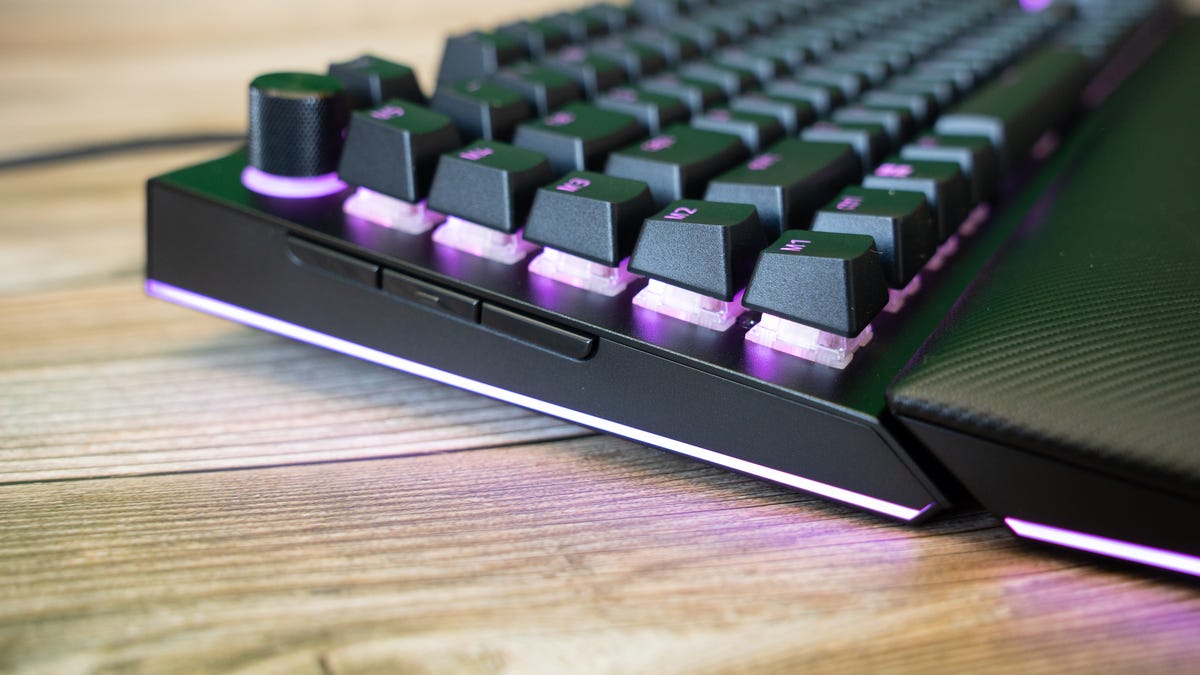

The three new thin programmable switches.
Lori Grunin/CNETThere are also three new switches on the left side. I love the idea, but not so much the execution. I constantly make microadjustments to the location of keyboards — a nervous tic when I’m not actively typing — and so I end up hitting them a lot. It doesn’t help that I’m also adjusting to avoiding the left-side macro keys when reaching for alt-tab, where my compensation means my ring and pinky fingers naturally fall on those switches. And they’re too easy to activate, which may probably be a more broadly applicable issue.
These aren’t really complaints, since it’s certainly not the first keyboard to put the macro keys down the left side, but if you’re used to other layouts your muscle memory might need some retraining.
Then there’s the redesigned multicontroller, the roller bar with a bank of five, tall, round buttons above the number pad. It’s similar to the design on other keyboards, but the location and elevation don’t work, at least for my hands. The keys are so tall, relative to it, that it’s awkward to use. And remapping the control dial to do the same things, like adjust audio volume, isn’t quite as convenient, since you have to press it to cycle through the different mappings.
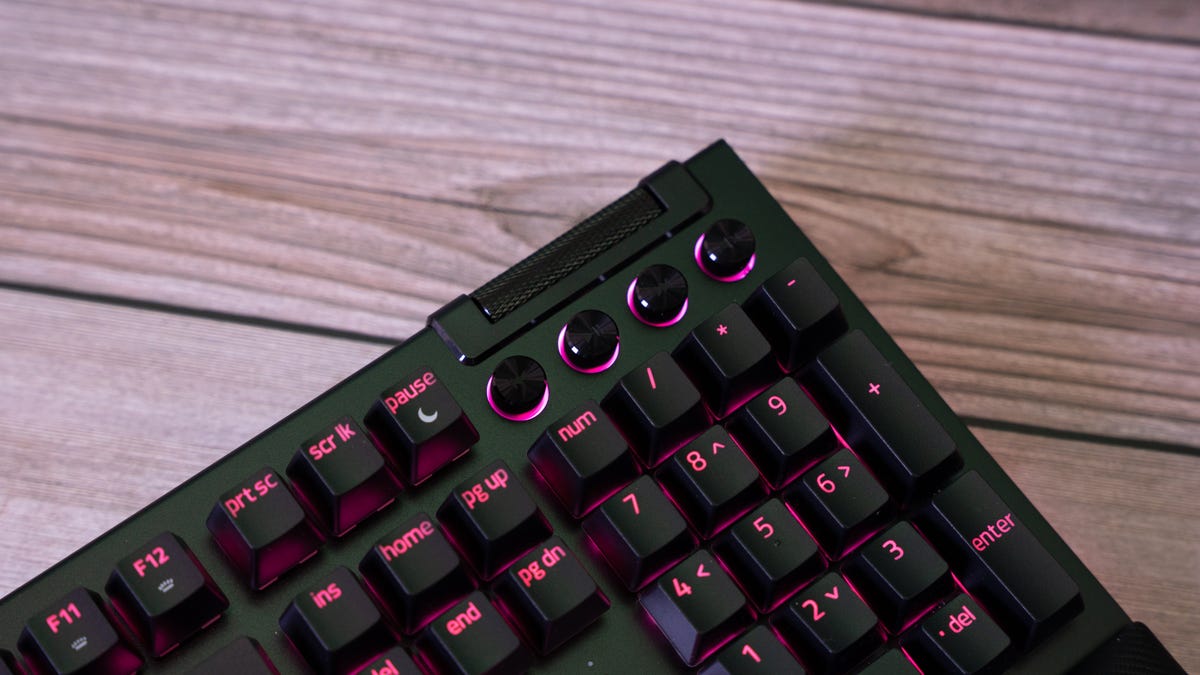

The multicontroller roller is set too deep below the rest of the keys.
Lori Grunin/CNETLike a lot of the programmability, you have to be running Razer’s Synapse utility for your customizations to work; you can’t save a lot of them to the internal keyboard memory. On the other hand, when you cycle through the mappings for the control dial there’s a popup telling you what the setting is and what the rotation does. There’s also a backlight color attached to each mapping but it’s not persistent, so you don’t know which setting the dial is currently mapped to with a glance.
The USB passthrough is a nice-to-have, and the new wrist rest is a lot more comfortable than the old one, plus it now attaches — pretty strongly — to the keyboard. If you’re sensitive to textures in a “I wear my shirts inside out because the seams make me crazy” kind of way, the bumpy faux leather may bother you, though.
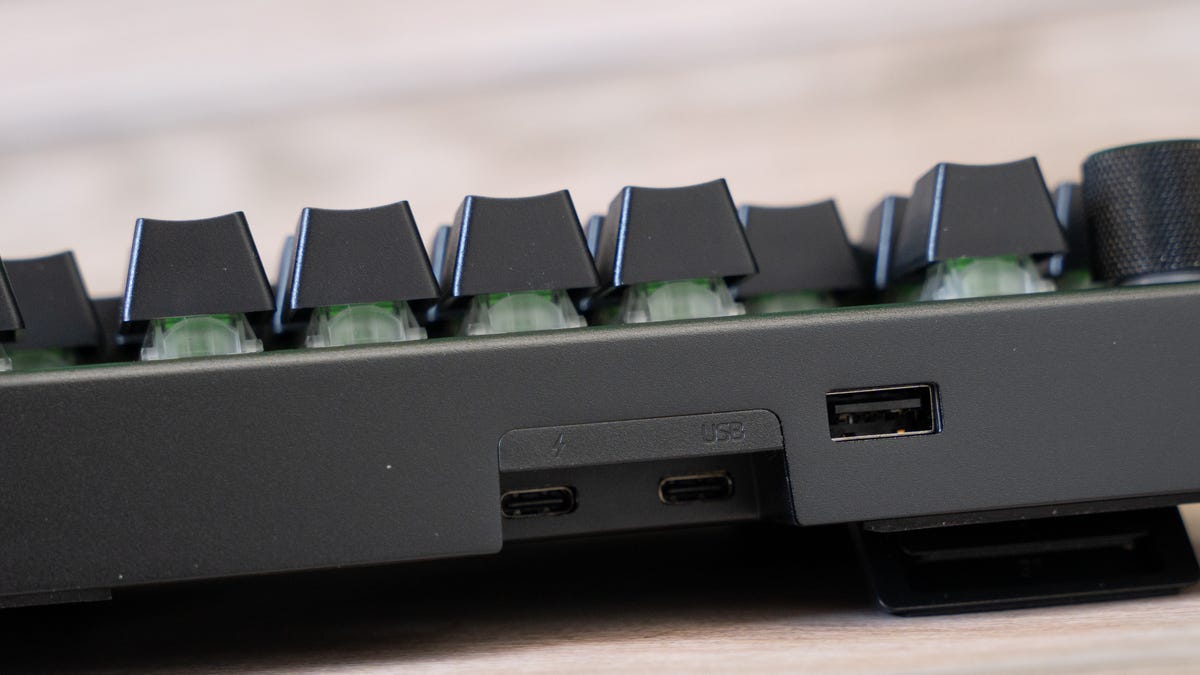

USB passthrough. Yay!
Lori Grunin/CNETIt’s still big and heavy, but solidity in a keyboard isn’t something to complain about. Razer has upped the switch rating to 100 million keypresses, but they’re the same switches as before — they’ve just been tested more. I don’t put a lot of stock in durability ratings, but it’s nice to know that pounding on the keys won’t kill them any faster than it used to.
I’ve been using optomechanical switches for so long — and, more recently, linear ones — that going back to the feel of the tactile mechanicals has required some adjustment. But it’s nice to know that my fingers won’t accidentally trigger strokes if I rest them on the keys. That’s one of the perks that I miss with other types of switches.
For games where fast keyboard combos you can program are more important than single-key quick responsiveness, the BlackWidow V4 Pro makes a lot of sense. But unless you’re on board with how all the controls work, $230 might feel too expensive for your needs.

